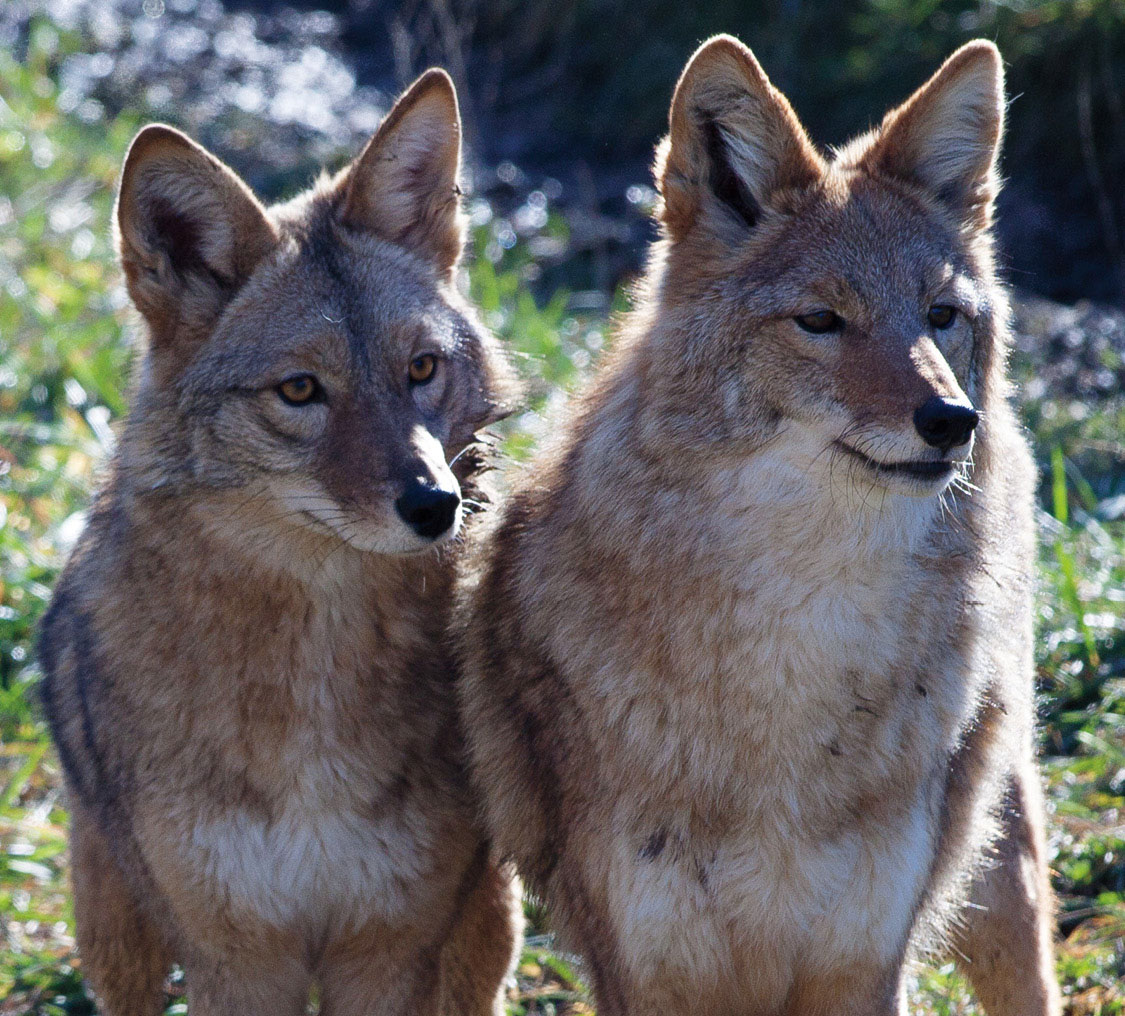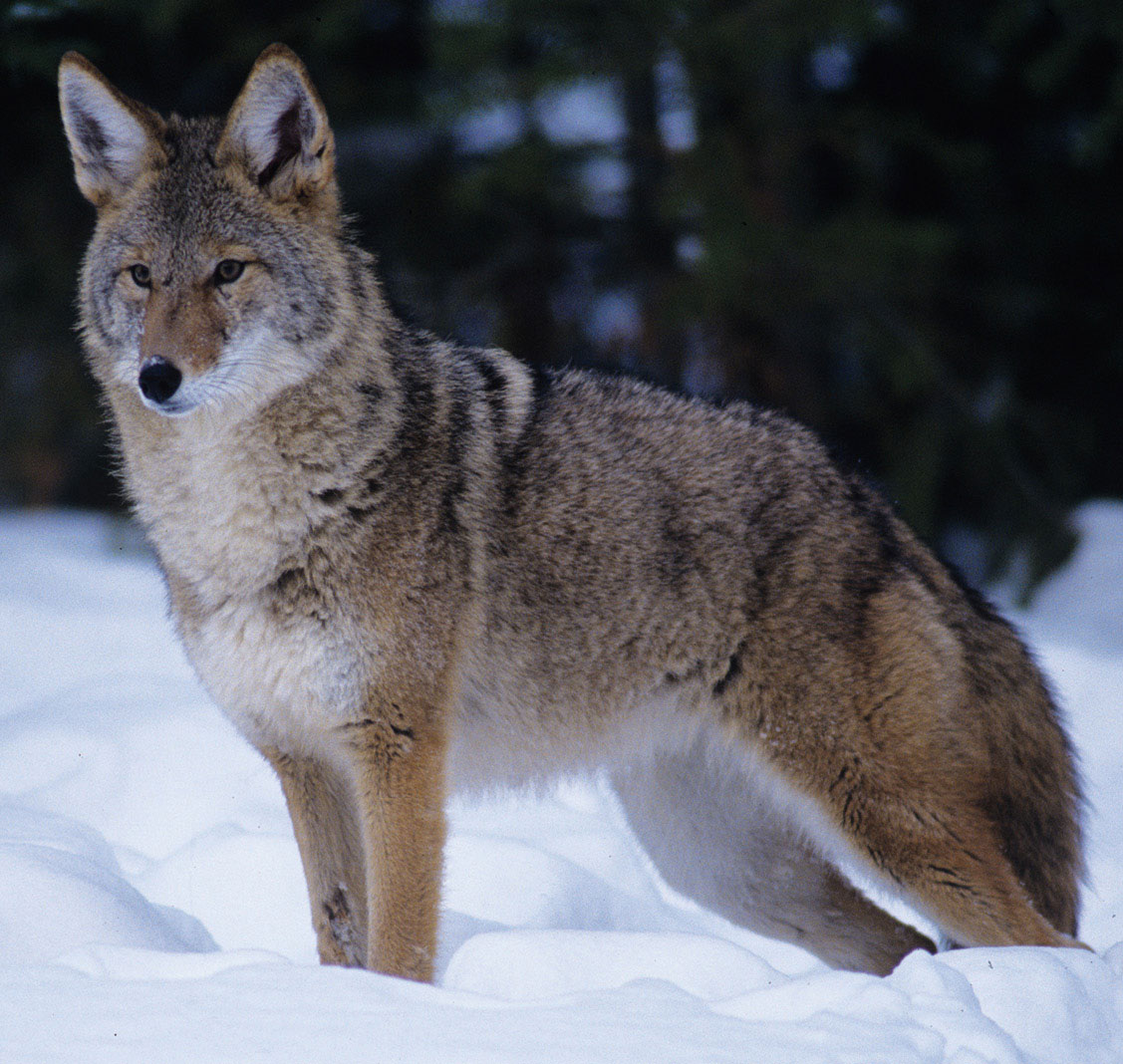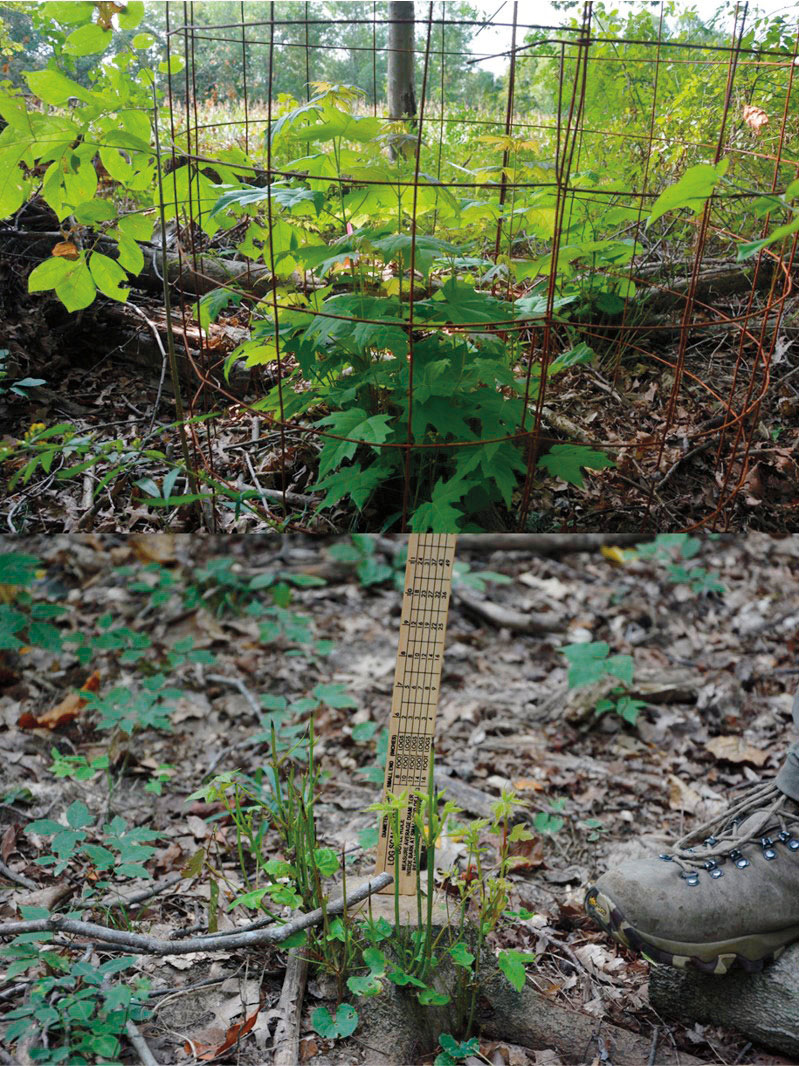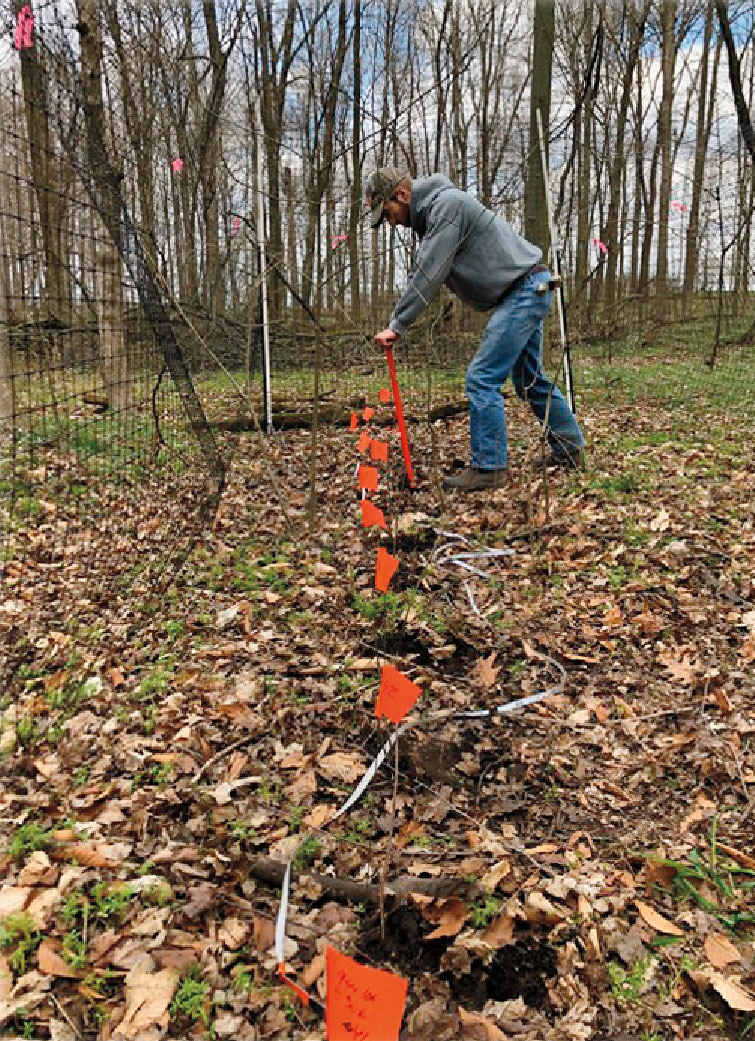Assessing White-tailed Deer Browsing in Woodlands
It is likely no surprise to many Indiana woodland owners that white-tailed deer can cause problems. Research has shown that deer feeding or browsing on tree seedlings reduces growth, reproduction, and survival, and promotes species that deer do not like to eat, including many non-native plants. Many woodland owners seek to control their deer populations through hunting to reduce damage to seedlings and other plants. However, the number of deer needed to cause damage may vary from property to property, so being able to monitor the impact deer have on your woodland with differing population sizes is helpful. Luckily, many methods exist that can monitor browsing intensity on woody species, which can be used to guide decisions on how many deer a woodland can support. Researchers from the Purdue Integrated Deer Management Project (https://ag.purdue.edu/fnr/researchindeer/) have been evaluating four different methods of monitoring deer browsing intensity on woody species across the northern, central, and southern regions of Indiana. These methods are known as the percent browsed method, the twig age method, the oak sentinel method, and the stump sprout method.
The percent browsed method involves counting the number of twigs available for deer to browse and the number of twigs that are browsed by deer for species that are commonly eaten by deer.  These counts allow the calculation of browsing intensity, which is the percentage of the available twigs that are browsed (Figure 1). This method is the most direct way of measuring browsing intensity, so it can be used as a baseline to compare how well other methods work. The twig age method works by counting how many years it has been since a twig was browsed, which is done by counting the annual growth scars on a twig. Sugar maple and ash species are great to use, since they are often highly available, browsed by deer, and their growth scars are easy to recognize. At the beginning of each growing season, when new twig growth begins, scar tissue forms where the bud was set. The number of scars on a twig represents how many years old that twig is. By counting how many scars are on a twig until you reach a browsed connected twig, you can measure the twig age (Figure 2). Twig aging stops at a maximum of five years because after that growth scars are harder to see. If the twig you chose to age is browsed, then the twig age would be zero, meaning it was browsed this year. For this method, a lower number (representing fewer years since browsing) represents a higher browsing intensity.
These counts allow the calculation of browsing intensity, which is the percentage of the available twigs that are browsed (Figure 1). This method is the most direct way of measuring browsing intensity, so it can be used as a baseline to compare how well other methods work. The twig age method works by counting how many years it has been since a twig was browsed, which is done by counting the annual growth scars on a twig. Sugar maple and ash species are great to use, since they are often highly available, browsed by deer, and their growth scars are easy to recognize. At the beginning of each growing season, when new twig growth begins, scar tissue forms where the bud was set. The number of scars on a twig represents how many years old that twig is. By counting how many scars are on a twig until you reach a browsed connected twig, you can measure the twig age (Figure 2). Twig aging stops at a maximum of five years because after that growth scars are harder to see. If the twig you chose to age is browsed, then the twig age would be zero, meaning it was browsed this year. For this method, a lower number (representing fewer years since browsing) represents a higher browsing intensity.
The oak sentinel method involves planting northern red oak seedlings (Figure 3), and returning later in the summer to measure the percent of individual seedlings browsed as the measurement of browsing intensity. The stump sprout method involves felling small diameter trees such as hackberry, ash, or red maple, which will sprout prolifically and are browsed by deer. A small cage is placed over a subset of the stumps to protect the sprouts from being browsed by deer (Figure 4). The measurement of browsing intensity is the average difference in height between caged and uncaged stump sprouts, where a greater height difference represents higher browsing intensities.
The early results from this project suggest that each method may be useful for monitoring deer browsing intensities. Browsing intensities calculated with the stump sprout method were similar to those from the percent browsed method.  However, the stump sprout method was the most expensive method because it required using cages, and it took 10 times longer than the percent browsed method to complete. Browsing intensities from the twig age and oak sentinel methods were similar to the percent browsed method in the central and northern regions, but not within the southern region.
However, the stump sprout method was the most expensive method because it required using cages, and it took 10 times longer than the percent browsed method to complete. Browsing intensities from the twig age and oak sentinel methods were similar to the percent browsed method in the central and northern regions, but not within the southern region.  The twig age and percent browsed methods both required no material costs, and took similar amounts of time (~45 minutes per woodland). The oak sentinel method did require the purchase of seedlings, which can become expensive if this method is used over a large area. This method also took twice as long as the percentage browsed method because it required two trips to each site, one to plant the seedlings and one to measure browsing later in the summer.
The twig age and percent browsed methods both required no material costs, and took similar amounts of time (~45 minutes per woodland). The oak sentinel method did require the purchase of seedlings, which can become expensive if this method is used over a large area. This method also took twice as long as the percentage browsed method because it required two trips to each site, one to plant the seedlings and one to measure browsing later in the summer.
Each method we assessed has pros and cons associated with their use, and many factors will likely influence which method is best for a landowner. If the cost and time spent are the most important factors, the twig age or percent browsed method may be the best option. If you are planning to plant oak seedlings or thin small trees, the oak sentinel and stump sprout methods can be used in conjunction with these planned management actions. Each of these methods could be useful for monitoring deer impacts over time, as levels of browsing intensity, as measured by these methods, should change with changing deer abundance in a forest. Because of this, we provide suggestions for how to interpret the calculation of browsing intensities from each of these methods (Table 1).  For any other questions, please feel free to email Richard Sample at rsample@purdue.edu.
For any other questions, please feel free to email Richard Sample at rsample@purdue.edu.
R.D. Sample is a PhD Candidate in the Department of Forestry and Natural Resources at Purdue University. R.D.’s work on the Integrated Deer Project focuses on the successional changes of native plant communities that are brought on by deer browsing.
